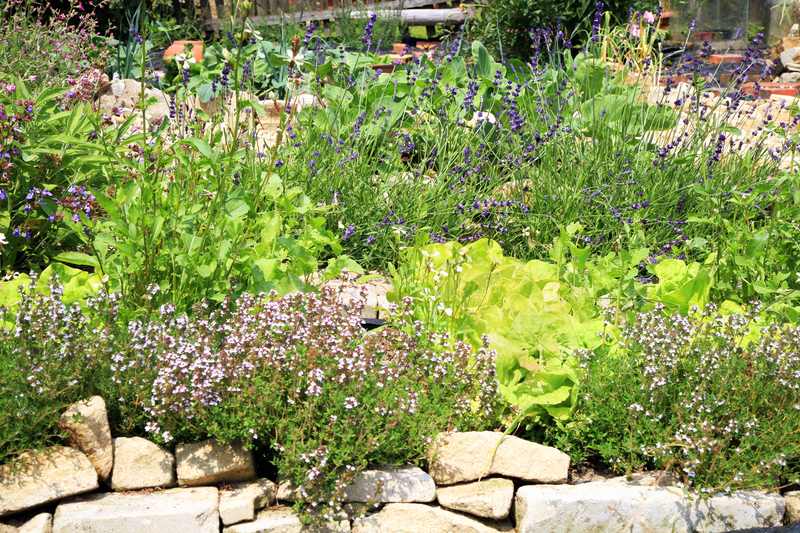Strengthening Your Garden for Adverse Weather Challenges
Posted on 19/09/2025
Strengthening Your Garden for Adverse Weather Challenges
In our rapidly changing climate, gardeners everywhere are seeking effective ways to make their gardens more resilient against unpredictable and extreme weather conditions. From torrential rains and violent storms to unrelenting heatwaves and unseasonal frosts, adverse weather events can cause significant stress to your plants and overall landscape. Fortunately, by employing proactive strategies and intelligent design choices, you can fortify your garden against severe weather and ensure thriving plants all year long.
Understanding the Impact of Harsh Weather on Gardens
Before diving into solutions, it's crucial to identify how hostile climate events can affect your outdoor haven. Here are just a few examples:
- Heavy rain can lead to waterlogged soils and plant root rot.
- Drought conditions may weaken plants and reduce yields.
- High winds can break branches, uproot young trees, and cause soil erosion.
- Unexpected frosts may damage delicate or out-of-season blooms.
- Heatwaves increase the risk of sun scorch and dehydration.
- Hailstorms can shred foliage and bruise fruit.
Recognizing these potential threats is the first step in developing an effective plan for strengthening your garden's weather resistance.

1. Smart Garden Planning and Design
Site Analysis and Layout
Begin with a thorough assessment of your garden's natural advantages and vulnerabilities. Consider the following:
- Elevation: Areas prone to flooding should be avoided for sensitive plants.
- Exposure: Locate garden sections based on sunlight patterns and wind direction.
- Natural barriers: Take advantage of existing trees, fences, or buildings that provide shelter from winds.
Implementing Defensive Landscaping
Think about integrating features that help weatherproof your gardening space, such as:
- Windbreaks: Plant robust hedges (like privet or laurel), or install fences to block prevailing winds and protect delicate plants.
- Raised beds: These provide better drainage during excessive rainfall, guarding roots against rot.
- Swales and rain gardens: Channel superfluous water away from key plantings and reduce runoff hazards.
2. Choosing Resilient Plants for Tough Weather
Selecting the Right Species
Opting for weather-hardy plants is a foundation of a resilient garden.
- Native plants: Plants indigenous to your climate are naturally adapted to survive local extremes.
- Drought-tolerant species: Sedums, lavender, and agastache withstand dry spells with ease.
- Wind-resistant trees and shrubs: Flexible species like willows or hawthorn are less likely to be damaged.
- Salt-tolerant plants: For coastal gardens, choose sea thrift or armeria to endure salt-laden winds.
Pro tip: Mix annuals and perennials, and diversify plant selections to ensure that some species will always be able to weather a particular event.
Timing and Succession Planting
Stagger plantings and incorporate successions to avoid losing your entire harvest during a single adverse event. Plant cool-season crops in early spring or late summer, and keep records to optimize for your unique microclimate.
3. Strengthening Soil for Better Weather Resilience
The health of your soil is directly linked to the endurance of your plants. Robust soils act as a stabilizer, retaining moisture in droughts and draining efficiently during downpours.
Building Better Soil Structure
- Organic matter: Regularly add compost, leaf mold, or aged manure to improve water retention and promote healthy root systems.
- Mulching: Apply a thick layer of organic mulch to insulate plant roots, moderate temperature fluctuations, and suppress weeds.
- Soil testing: Check PH and nutrient levels. Amending your soil accordingly can ensure stronger plant growth and better survival during stress.
Combating Erosion and Compaction
- Cover crops: Sow green manures like clover or rye to anchor soil and add fertility during the off-season.
- Terracing: On sloped land, terraces reduce runoff and create level planting areas.
4. Weatherproof Water Management
Drought Defense
- Water-efficient irrigation: Install soaker hoses or drip systems to target root zones without wasting water.
- Rainwater harvesting: Collect runoff from roofs with barrels, reducing dependency on municipal water during dry spells.
Flood Mitigation
- Permeable paths: Use gravel or permeable pavers to allow rainwater to seep into the ground.
- French drains: Channel excessive water away from vulnerable beds and structures.
5. Providing Physical Protection for Plants
Shields and Supports
- Row covers and tunnels: Protect tender crops from frost, hail, or scorching sun with floating row covers or greenhouse tunnels.
- Staking and tying: Secure floppy or top-heavy plants with sturdy stakes or cages, especially before storms.
- Temporary wind screens: Set up burlap or shade cloth barriers as needed during extreme events.
6. Regular Garden Maintenance and Monitoring
Maintaining a healthy, well-tended garden is your best line of defense against any kind of weather challenge.
Keep Plants Strong
- Monitor for pests and diseases: Weakened plants are more susceptible to attack after stress, so inspect regularly.
- Prune damaged or weak limbs: Removes potential hazards and encourages new, vigorous growth.
- Fertilize appropriately: Use slow-release or organic fertilizers to prevent nutrient imbalances.
Stay alert to weather forecasts and adapt your schedule to plant, water, or protect as needed.
7. Embracing Biodiversity for Resilience
Diversity is nature's insurance policy. Encouraging a varied garden ecosystem can help offset losses and create a more self-sustaining environment.
- Attract beneficial insects with pollinator-friendly flowers and shrubs.
- Encourage birds and amphibians for natural pest control.
- Mix plant varieties to ensure that not all are susceptible to the same weather event.
8. Preparing for Seasonal Extremes
Cold and Frost Protection
- Use frost blankets or horticultural fleece to cover early or late-season crops.
- Mulch deeply around perennials to insulate roots from freezing temperatures.
- Plant in sheltered microclimates (near walls or large rocks) which can buffer temperature drops.
Heatwave Preparation
- Water early in the day to reduce evaporation losses.
- Increase shade with temporary cloths or by planting sunflowers and tall annuals on the sunward side.
- Choose heat-tolerant varieties, such as tomatoes bred for hot climates or Mediterranean herbs.
9. Leveraging Technology and Modern Tools
- Soil moisture sensors: Alert you to water when soils are truly dry, preventing both over- and under-watering.
- Online weather alert apps: Help you track temperature drops or upcoming storm warnings.
- Automatic irrigation timers: Ensure even watering, even if you're not at home during a hot spell.

10. Learning from Experience and Adaptation
No two gardens are exactly alike--track what approaches work best in your microclimate, and be prepared to adjust methods as new weather patterns emerge. Record keeping, photos, and personalized calendars help tailor your defenses season by season.
Conclusion: Building a Resilient, Weatherproof Garden
Strengthening your garden for adverse weather challenges doesn't require an overhaul, but rather incremental changes that compound in effectiveness over time. By assessing your landscape, choosing resilient plants, improving soil health, water management, and offering physical protections, your garden can face future storms, droughts, and surprises with confidence.
Implement the techniques outlined above for weather-resistant gardening and transform your patch of earth into a robust sanctuary that flourishes--no matter what the sky brings. As you continue to adapt and learn, you'll find that your green space becomes not only stronger but also more beautiful and rewarding with every season.
Start today and watch your resilient garden bloom, come rain, wind, or shine!

